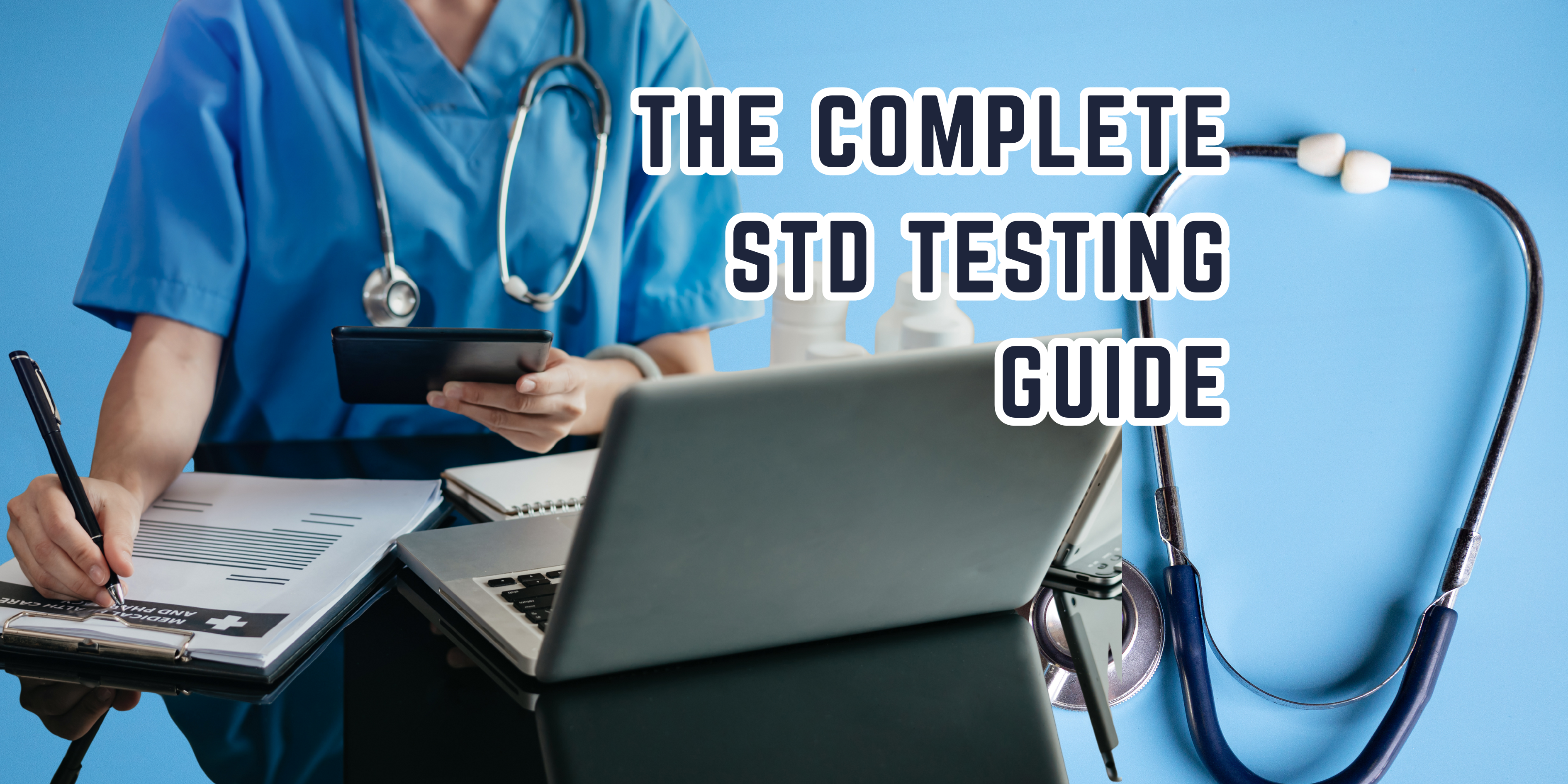The Complete STD Testing Guide: Everything You Need to Know
Ready For a Simple, Private Testing Experience?

- The Complete STD Testing Guide: Everything You Need to Know
- Ready For a Simple, Private Testing Experience?
- Why Getting Tested Is So Important
- Ready For a Simple, Private Testing Experience?
- What to Get Tested For: An STD Testing Guide to Common STDs
- Where to Get Tested: Your Options, Ranked by Convenience
- How it Works with STDcheck.com
- Ready For a Simple, Private Testing Experience?
- What to Expect: The Testing Process Demystified
- The Post-Test Plan: What to Do Next
Talking about and getting tested for sexually transmitted diseases (STDs) can be uncomfortable. But knowing your status is a powerful and empowering step toward taking control of your health. (Best STD Testing Guide For You)
This STD Testing guide is designed to be your complete resource, demystifying the process and providing you with clear, actionable information. We’ll walk you through why testing is so important, what to get tested for, and the fastest, most convenient ways to get it done.
The truth about STDs is that they don’t always have obvious symptoms. Many people who have an STD don’t even know it, which is why regular testing is so critical.
Why Getting Tested Is So Important
- You can be infected and not know it. Many common STDs, like Chlamydia, Gonorrhea, and HIV, can be asymptomatic, meaning they show no symptoms.
- Early detection is key. Diagnosing an STD early can prevent serious, long-term health complications, including infertility, chronic pain, and certain types of cancer.
- It protects you and your partner(s). Knowing your status is a sign of respect and responsibility. It helps you prevent the spread of infections and makes intimate relationships safer for everyone.
Ready For a Simple, Private Testing Experience?
What to Get Tested For: An STD Testing Guide to Common STDs
When you go in for a test, you might be wondering which STDs you should be screened for. While a healthcare provider can help you decide, here is a quick overview of some common STDs and how they are typically tested.
| STD Name | Common Symptoms | Type of Test Required |
|---|---|---|
| Chlamydia | Often asymptomatic. May cause abnormal discharge or pain during urination. | Urine or swab from the affected area. |
| Gonorrhea | Often asymptomatic. May cause discharge, painful urination, or painful bowel movements. | Urine or swab. |
| HIV | May show flu-like symptoms 2-4 weeks after exposure, but often has no symptoms for years. | Blood or oral swab. |
| Herpes | Painful sores or blisters on or around the mouth or genitals. | Visual exam, swab of the sore, or blood test. |
| Syphilis | A firm, painless sore. May also cause a body rash, fever, and fatigue. | Blood test or swab from the sore. |
| HPV | Often no symptoms. May cause genital warts or lead to certain cancers. | Swab (for genital warts) or Pap test (for cervical changes). |
Where to Get Tested: Your Options, Ranked by Convenience
You have a few great options for getting an STD test. The best one for you depends on your priorities: speed, privacy, or cost.
- Your Doctor’s Office: Your primary care physician can order all the necessary tests, and it’s a great option if you have a trusting relationship with your doctor. However, it can require an appointment and may involve a discussion you’d rather keep private.
- Local Health Clinics: These clinics specialize in sexual health and are often run by local health departments or non-profits. They are an excellent, confidential, and often low-cost option. The downside is they can have long wait times, and appointments might not be available right away.
- Online & At-Home Testing Services: For a fast, private, and discreet experience, online testing services like STDcheck.com are an increasingly popular choice. This is often the quickest way to get a test done without the hassle of a traditional doctor’s visit.
How it Works with STDcheck.com
We believe in making healthcare as convenient as possible. That’s why we highly recommend STDcheck.com for their streamlined process and commitment to privacy.
- Order Your Test Online: Select a test panel that covers the STDs you’re concerned about.
- Visit a Local Lab: Walk into one of over 4,500 labs nationwide (no appointment needed). The sample collection takes about 5 minutes.
- Get Results Fast: Your results are delivered securely online in as little as 1-2 business days.
Ready For a Simple, Private Testing Experience?
What to Expect: The Testing Process Demystified
The idea of getting a test can be more intimidating than the process itself. Here’s a brief breakdown of what you can expect:
- Blood Tests: A small vial of blood is drawn from your arm by a trained phlebotomist. It’s a quick, painless process.
- Urine Samples: You’ll be asked to provide a urine sample. This is used to test for infections like Chlamydia and Gonorrhea.
- Swabs: A swab may be used to collect a sample from the throat, genitals, or rectum, depending on the test. This is also a quick and simple procedure.
The Post-Test Plan: What to Do Next
Once your results are in, what happens next? (This STD Testing Guide Will Tell You)
- If your results are negative: Congratulations! Continue practicing safe sex and consider routine testing to stay on top of your health.
- If your results are positive: Please remember that an STD is not a moral failing. It’s a common medical condition that can be treated. STDcheck.com offers consultations with doctors who can discuss your results and prescribe medication, or you can contact a trusted healthcare provider for the next steps.
